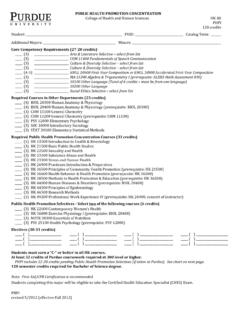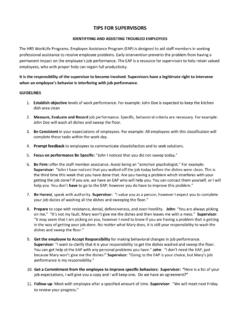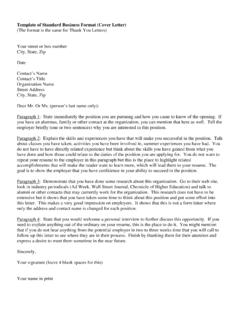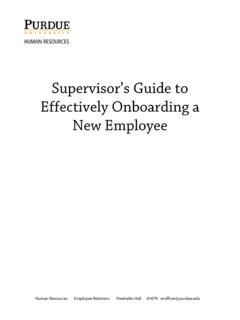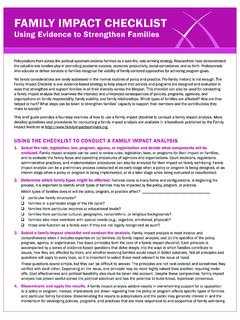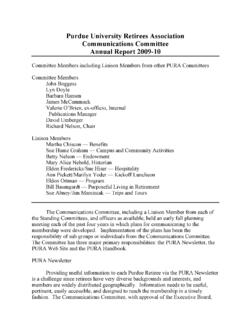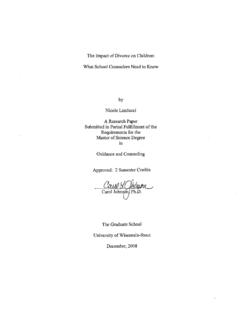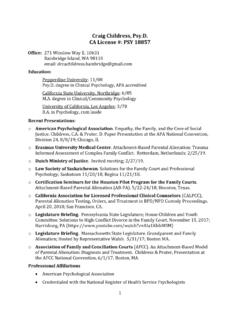Transcription of Why Single Parenthood Affects Children (pdf)
1 Wisconsin Family Impact Seminars23 WWhy Single Parenthood Affects Childrenhen greater risks are found, we are beginning to develop a better under-standing of those factors that differentiate the Children in Single parentfamilies who develop disturbances from those who do not. Understand-ing why family instability places some Children at greater risk is essential inplanning programs and policies to promote healthy Children and families. In thissection, we briefly summarize five perspectives on the possible pathwaysthrough which these effects are transmitted: economic hardship, loss of parentalsupport and supervision, lack of community resources, parental conflict, and lifestress and HardshipPoverty is the most profound and pervasive factor underlying developmentalproblems of the young .
2 Roughly, one of two families headed by a Single motheris living in poverty compared with one of ten married couples with Children (McLanahan & Booth, 1989). Not surprisingly, Single parents are twice as likelyto report that they worry all or most of the time that their total income is notenough to meet family expenses. On average, poor Children in mother-headedfamilies are poor for seven years, more than a third of their childhood (Garfinkel& McLanahan, 1986).The economic differences result, not only from lower income preceding divorce,but also from the decline in income that accompanies divorce (McLanahan &Sandefur, in press); the effect may differ somewhat for families who start outpoor or become poor.
3 Nevertheless, the income of Single mothers and their chil-dren after divorce is only 67 percent of their income before divorce, while the in-come of divorced men is 90 percent of the pre-divorce income (McLanahan &Booth, 1989).In one study using four nationally representative data bases, lack of incomeemerged as the Single most important factor in accounting for the differences inchildren from Single parent and intact families; differences in income are esti-mated to account for over half of the differences in the educational attainmentand steady employment of young adults, and just under half of the differences innonmarital childbearing (McLanahan & Sandefur, in press). Lack of income,however, does not appear to account for the differences in child well-being be-tween intact and stepfamilies (McLanahan & Sandefur, in press) or in intact anddivorced families (Amato & Keith, 1991).
4 Mother-only families are more likely to be poor because of the lower earning ca-pacity of Single mothers, the insufficient benefits provided by the state, and thelack of child support provided from the nonresidential father (Garfinkel &McLanahan, 1986). Nationally, only 50 percent of mothers were supposed to re-ceive a child support award in 1989; of these, only half received full payment,and a fourth received no payment at Single Parenthood Affects ChildrenLoss of parental Support and SupervisionParents who support and supervise Children enhance their well-being (Maccoby& Martin, 1983). In fact, poor parental monitoring has proven one of the mostpowerful predictors of youth involvement in problem behaviors (Patterson &Stouthamer-Loeber, 1984).
5 Single parents and stepparents monitor their childrenless closely and know less about where their Children are, who they are with, andwhat they are doing than parents in intact families (Amato & Keith, 1991;Hetherington, 1989; Steinberg, 1986; McLanahan & Booth, 1989; McLanahan &Sandefur, in press). Single parents are also less involved in their Children s school activities and havelower educational goals for their Children (Furstenberg & Nord, 1985;McLanahan & Booth, 1989; McLanahan & Sandefur, in press), two factorsknown to jeopardize academic achievement (Steinberg, Brown, Casmarek, Cider,& Lazarro, 1988). Based on recent evidence, Single parents who are more in-volved in school have Children who are less apt to experience problems (Benson& Roehlkepartain, 1993).
6 These differences in parent support and supervision are estimated to account for20 to 40 percent of the differences in child well-being between Single -parent andtwo-parent households; stepparents, however, do not make up for a biologicalparent (McLanahan & Sandefur, in press; Steinberg, 1987).Lack of Community ResourcesYouth who overcome disadvantage are able to rely on a greater number ofsources of social support than youth with serious coping problems, includingteachers, ministers, older friends, family day-care providers, nursery schoolteachers, neighbors, or contacts at social agencies (Garmezy, 1983; Werner,1990; Werner & Smith, 1982). Children from Single parent families who do wellare more apt to be enrolled in quality schools, extracurricular activities, andchurch or synagogue programs (Benson & Roehlkepartain, 1993).
7 Furthermore, the benefits of a supportive community appear to be strongest forchildren who are the most vulnerable to begin with (Steinberg, 1989). For ex-ample, the number of adult male relatives usually grandfathers and uncles whotook a child on outings away from home was related to improved report cardscores (Riley & Cochran, 1987); the benefits, however, were restricted to thesubgroup with the lowest average grades, Single parent only does social support benefit youth, it also benefits parents. Social isola-tion is well-documented as one of the best predictors of poor parenting. Regard-less of culture and social class, a mother is warmer and more emotionally stablewhen there are more adults around to help (Crockenberg, 1981; Crnic,Greenberg, Ragozin, Robinson & Basham, 1983).
8 Wisconsin Family Impact Seminars25 Not surprisingly, the Children of Single parents do better when the mother re-ceives strong support from nearby relatives, friends, or neighbors; members ofreligious groups; and staff members of family support and child care programs(Bronfenbrenner, 1991).Two-parent families tend to live in better neighborhoods and their Children aremore apt to attend better schools and associate with less deviant peers than singleparent or remarried families (McLanahan & Sandefur, in press). Single parentsare less likely to report that they consider their neighborhoods excellent or goodplaces to raise Children than two-parent families (National Commission on Chil-dren, 1991). Limited economic resources may force some families to move andlive in neighborhoods with poorer schools and fewer community services(McLanahan & Booth, 1989).
9 A greater number of geographic moves and lower quality schools and peergroups are estimated to account for 20 to 100 percent of the differences in childwell-being. These community resources appear particularly important in ac-counting for the differences between Children living with stepparents and bio-logical parents (McLanahan & Sandefur, in press). parental ConflictThis explanation is potentially more useful in explaining the differences in childwell-being in divorced or remarried families than never married families. Con-siderable evidence exists that a conflict-ridden marriage jeopardizes the well-be-ing of Children (Wallerstein & Blakeslee, 1989). Based on this, ending a con-flict-ridden marriage may actually boost rather than undermine Children s well-being.
10 Recent evidence suggests that Children in divorced Single parent familiesdo better than Children in high conflict, intact families (Amato, 1993; Amato &Keith, 1991; Peterson, 1986; Peterson & Zill, 1986). In fact, a review of 92 stud-ies documented strong and consistent support for the parental conflict explana-tion of the differences in child well-being between divorced and nondivorcedfamilies (Amato, 1993; Amato & Keith, 1991).While some families are undoubtedly so conflict-ridden and pathological thatthey cannot adequately care for Children , McLanahan and Sandefur (in press)contend that the proportion of families that fall into this category may be small;with half of all Children experiencing family instability, it is hard to believe thathalf of all parents have such conflictual relationships that they are unable to do areasonably good job of raising their Children .
